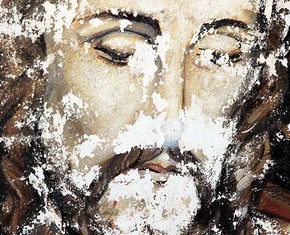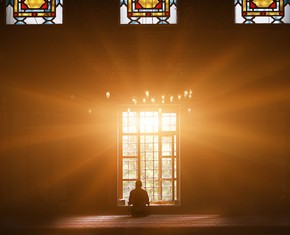The views expressed in our content reflect individual perspectives and do not represent the authoritative views of the Baha'i Faith.
Everywhere you look, someone says we’re in the “end times” – that we need to make our lives right with God before a prophetic, apocalyptic event wipes out the entire human race.
This end-time doctrine, an eschatological concept outlined by several religions, states that world events will someday reach a dreadful, punishing climax. In the West, most of us have heard of the Christian version of end-time prophecy.
So how do Baha’is interpret the meaning of these dire predictions?
RELATED: Have We Entered the End Times?
While various end-time viewpoints exist in different Christian denominations, the general notion goes like this: there will be an apocalypse – a complete destruction of the world – preceded by a second coming of Christ, a glorious event no one will miss, followed by a rapture, a period of tribulation (a decade or century of continuing crises), and finally, the establishment of what some call “God’s millennial reign.”
Let’s examine these predictions, starting with the apocalypse and the Return of Christ.
Many would say the end-time philosophy has its roots in the 24th Chapter of Matthew, where the apostles ask Christ: “… Tell us, when shall these things be? And what shall be the sign of thy coming and of the end of the world?”
Baha’is look at the fact that the New Testament variously uses two Koine Greek words to describe the world: kosmos and aion. Kosmos means the material planet, and aion means era or age. The Biblical end-time prophecies use aion each time – which explains why Baha’is believe that Christ referred to the end of an age or dispensation, and not the physical world.
When seen that way, the Bible clearly says that Christ’s first dispensation will end and simultaneously consummate into a new, second revelation. Baha’is believe this occurred with the coming of Baha’u’llah. Baha’u’llah, the prophet and founder of the Baha’i Faith, wrote:
In this most mighty Revelation, all the Dispensations of the past have attained their highest, their final consummation. … The signs of God shine as manifest and resplendent as the sun ….
Christ does associate a destructive story with his promised return. In Mathew 24:37 he said:
As it was in the days of Noah, so it will be at the coming of the Son of Man. For in the days before the flood, people … knew nothing about what would happen until the flood came and took them all away. That is how it will be at the coming of the Son of Man.
But again, Baha’is see the story of Noah’s ark as an attempt to warn his neighbors about a coming flood – and not a literal flood, but a flood of unbelief. Noah was ignored and mocked; meaning that with Christ’s return, people will also ignore and mock him as he warns them of impending danger.
This metaphorical understanding, rather than a literal interpretation of Christ’s warnings, also aligns with the notion that Christ will return as a thief in the night, and enter the house without the knowledge of those who live there.
Baha’is believe that all of this has occurred in the revelation of Baha’u’llah, who wrote:
Let your principal concern be to rescue the fallen from the slough of impending extinction, and to help him embrace the ancient Faith of God. … when the appointed hour is come, there shall suddenly appear that which shall cause the limbs of mankind to quake. Then, and only then, will the Divine Standard be unfurled, and the Nightingale of Paradise warble its melody.
So the notion of a future calamity followed by a time of peace is not foreign to Baha’is. As a result, the efforts of the world’s Baha’is focus on sharing Baha’u’llah’s unifying message and building a new system of peaceful global governance to ensure humanity’s spiritual survival.
What about the Rapture and the fact that every eye shall see Christ upon his return? While the word rapture does not actually appear in the Bible, 1 Thessalonians 4:16-17 does state this:
For the Lord himself shall descend from heaven with a shout, with the voice of the archangel, and with the trump of God: and the dead in Christ shall rise first: Then we which are alive [and] remain shall be caught up together with them in the clouds, to meet the Lord in the air.
For Baha’is, who view sacred scriptures as symbolic rather than literal, this concept of being caught up with God in the air is akin to a spiritual resurrection – that for those who discover Christ’s second coming in Baha’u’llah, they will be with him spiritually while living on Earth. For example, Baha’u’llah states: “… ye are the first among men to be re-created by His Spirit,” and “When once the seeker hath ascended unto this station, he will enter the City of Love and Rapture …”
But wouldn’t we all know that Christ has returned, as the Book of Revelation says: “Behold, He cometh with clouds; and every eye shall see Him …”
No, we wouldn’t necessarily all know. Several other Biblical passages state that Christ’s return would be veiled – for example: “… And a cloud hid Him from their sight …” in Acts 1:3-11; and “… Though seeing, they do not see …” in Mathew 13:13-15.
Essentially, when we look at the Hebrew definition of the word “cloud,” we find it to mean “a covering,” because clouds obscure and cover the sky. The word is used as a symbol of the Divine presence, indicating the splendor of that glory which it conceals. While the inner eyes of all human souls are refreshed by the outpourings of God’s new revelation, our outer eyes appear to be clouded. Baha’u’llah wrote:
Close one eye and open the other. Close one to the world and all that is therein, and open the other to the hallowed beauty of the Beloved. … The Hand of Divine power will, assuredly, lift up the veil, and expose to the sight of men that which shall cheer and lighten the eye of the world.
Finally, how do we understand the predicted period of tribulation, and the “millennial reign?”
For then there will be great tribulation, such as has not been from the beginning of the world until now, no, and never will be. (Matthew 24:21)
Immediately after the tribulation of those days the sun will be darkened, and the moon will not give its light, and the stars will fall from heaven, and the powers of the heavens will be shaken. (Matthew 24:29)
RELATED: Rapture, Apocalypse, and Prophecy: Symbolic, Not Literal
For Baha’is, the signs associated with this Biblical tribulation are allegorical – but the period of tribulation itself can be understood to herald, accompany and/or succeed the appointed hour of a new revelation.
While the world’s continuing tribulations are clearly heart-wrenching and painful – whether as an existing reality or a future condition – the “millennial reign,” on the other hand, describes a period of peace on Earth for 1,000 years under Christ’s returning rule. Revelation 20:4 points this out when it says: “… and they lived and reigned with Christ a thousand years.”
This concept of a millennium-long reign parallels the Baha’i understanding in some respects. Baha’u’llah said that his revelation would last a minimum of a thousand years, and the system of spiritual principles and laws Baha’u’llah revealed provide a framework for a millennial reign of peace. Baha’u’llah wrote:
Think not that We have revealed unto you a mere code of laws. Nay, rather, We have unsealed the choice Wine with the fingers of might and power. … Mankind’s ordered life hath been revolutionized through the agency of this unique, this wondrous System — the like of which mortal eyes have never witnessed.
A recent letter from the Universal House of Justice, the democratically-elected global leadership body of the world’s Baha’is, speaks directly to the nature of this process, which Baha’is believe will one day lead to an unprecedented era of human unity and peace:
None can anticipate precisely what course the forces of disintegration are destined to take, what violent convulsions will yet assail humanity in this travailing age, or what obstacles and opportunities may arise, until the process reaches its culmination in the appearance of that Great Peace that will signalize the arrival of the stage when, recognizing the unity and wholeness of humankind, the nations will “put away the weapons of war, and turn to the instruments of universal reconstruction”.
However, Baha’is are not just sitting around waiting for this promised peace to arrive. The world’s Baha’is are actively working, based on Baha’u’llah’s new blueprint, to build the infrastructure and system that will nurture, develop, protect and ensure global peace and human harmony.
Some might say the Baha’is are building the Ark.
















Comments
Sign in or create an account
Continue with Googleor